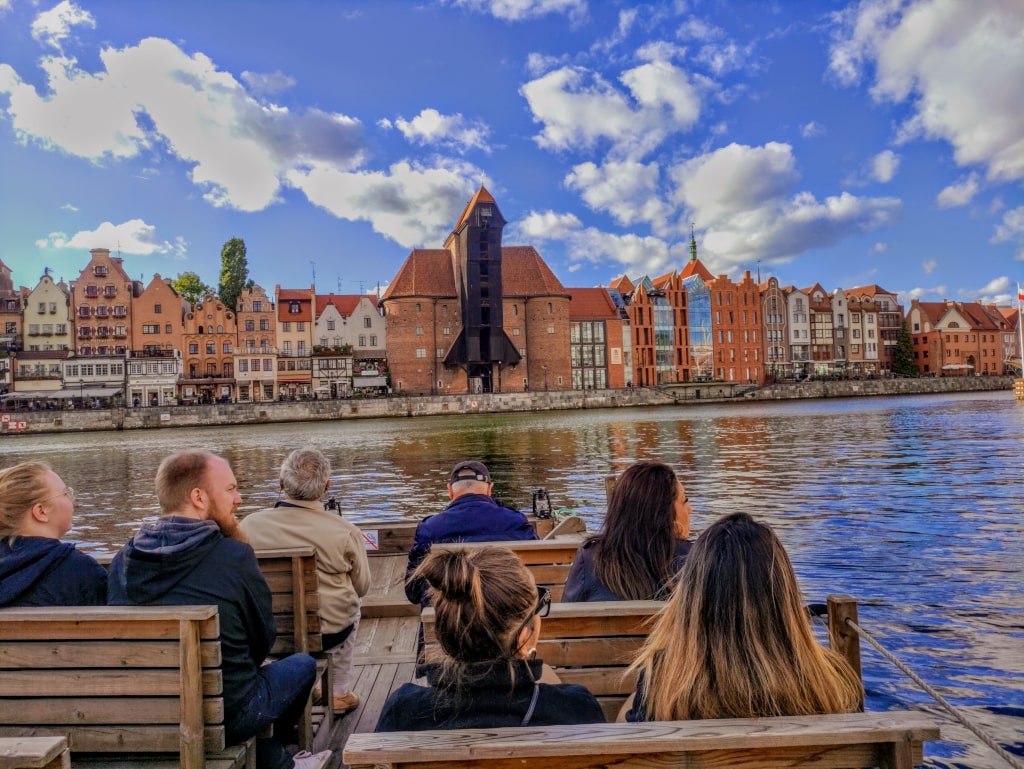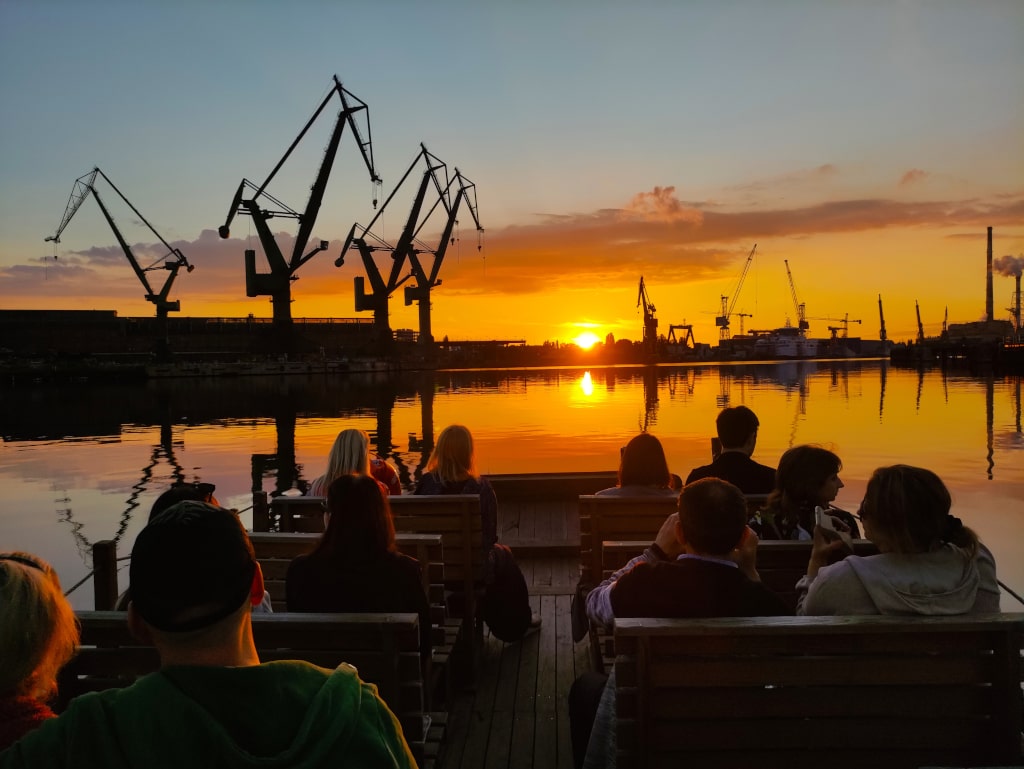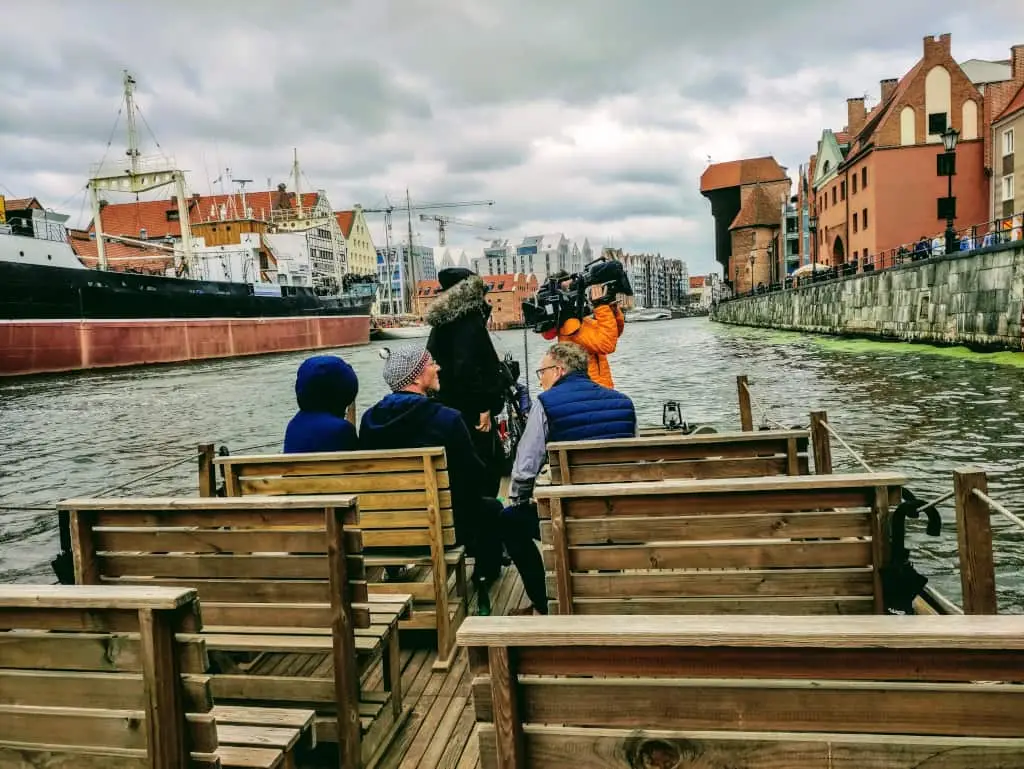
Green Gate and Green Bridge
The Green Gate is the largest, oldest and most ornate building of its kind in Gdansk. It was erected between 1564 and 1568 at the spot where Długi Targ reaches the Motława River. Together with the Green Bridge, it connects the Main City with Granary Island. Formerly, the gate introduces The town was visited by guests arriving via the Royal Road from nearby Elblag and Königsberg, located further east. Beginning Originally there were three passages, but in the second half of the 19th centurycentury also turned a fourth one at the site of the City Scales, which once served merchants in their transactions.

It was intended that the magnificent Green Gate building would serve as the headquarters of the Third Ordinance, a 100-member reprezentation of merchants and artisans to the city government. However, these plans were soon changed and the residential part was expanded to host visiting Gdansk’s kings. Unfortunately, according to sources, no ruler took up residence in the Green Gate for long. The gate therefore served various other functions, for example as an armory, but also as a place for feasts, feasts and shows (on the second floor there is a huge, measuring ca 300 square meters hall lit from all sides by 25 windows). In the 19th century the Green Gate was rebuilt several times once changing, then again restoring its former appearance. It housed the Natural History Society and, until the outbreak of World War II, the Natural History Museum. After the war (and the rebuilding proves from destruction) the Green Gate was home to the Monuments Conservation Workshop, and now houses a branch of the National Museum and the Gdansk Gallery of Photography.

If someone wanted to figure out what came first, the Green Gate or the Greenny Bridge would have had trouble with this conundrum. This is because both structures were built on the site of the earlier Kogi Gate and Kogi Bridge, which were partially demolished to erect new structures according to architectural solutions fashionable in the 16th century (in the style of Dutch Mannerism). It will be much easier to explain the puzzling names of the two structures well it was the Green Bridge that gave part of its name to the Green Gate, which, as you can see, has nothing to do with greenery. The bridge, on the other hand, was green from the beginning, such was the hue of the stones used in its construction (and the algae overgrowing it is still green today).
The Green Bridge is the oldest of its kind in Gdansk. It is worth mentioning that it was built as a drawbridge (in fact, like all Gdansk bridges), which made it possible to freely ne use of Gdansk’s main trade route, which was the Motlawa River. Only after the war was the bridge deprived of this practical function cision. How is it possible that it is now possible to pass under it without raising the span shredding? Could it be another mystery? No, it’s just that both our galley and most of the boats plying the Motlawa River today have no rigging.

- Materiały pochodzą z przewodnika "Galarem Po Gdańsku"
- Fot.: fotopolska.eu
- City of Gdansk
- By Galar in Gdańsk, City of Gdansk, Granary Island, Green Bridge, Green Gate, Long Embankment, Motlawa, Water Gates
Buy tickets
Available forms of payment:

Select the number of tickets and then the date.
See other cruises

Galar cruise in Gdansk
Unforgettable, atmospheric cruises on the Motlawa River aboard a 12-person replica of a vintage Polish Galar boat.

Sunset Cruise
Take an enchanting cruise around Gdansk during a dazzling sunset and discover a whole new face of sightseeing.

Private cruise
Rent an intimate, 12-person replica of a historic Polish Galar boat and take your friends, on a unique cruise along the route of your choice.
